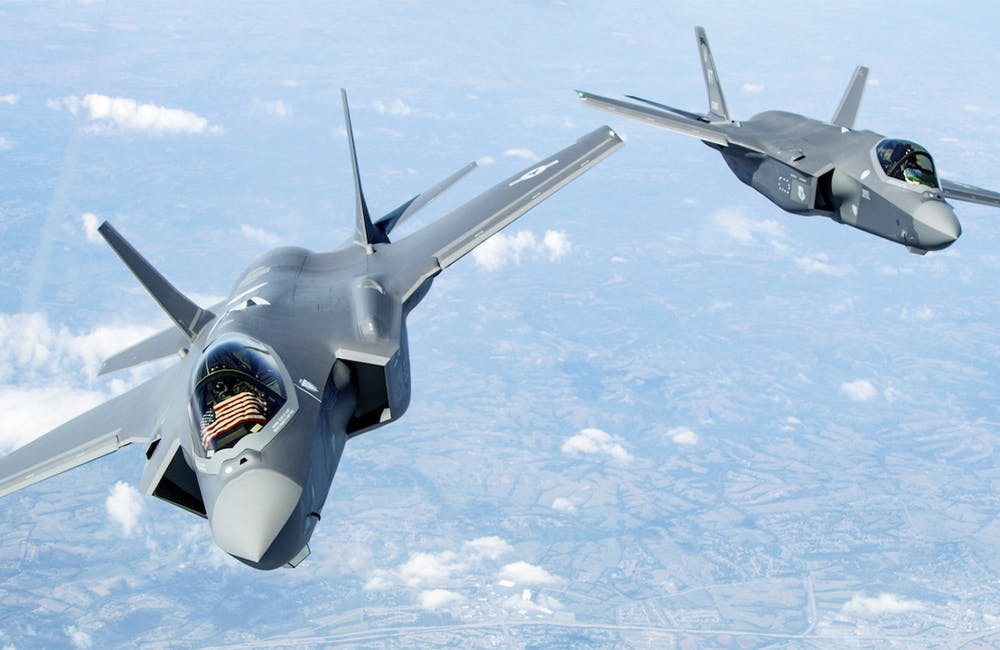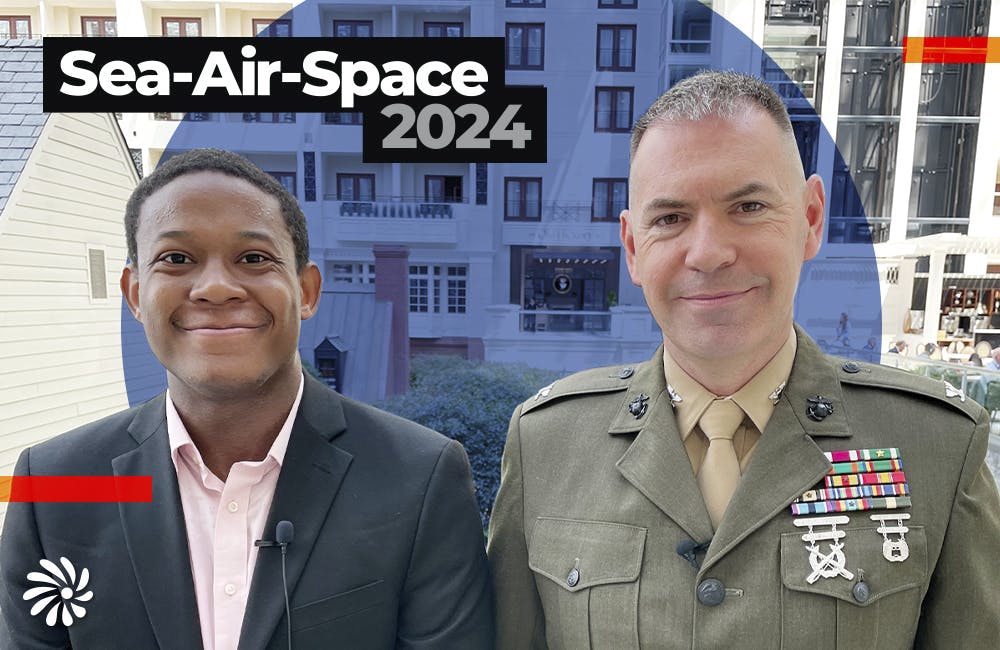Navy Leaders Say Project Overmatch Ahead of Delivery Timelines
Officials compared the service’s CJADC2 initiative to the Manhattan Project and said over-the-shelf technology will not suffice.

NATIONAL HARBOR, Maryland — Navy leaders said that Project Overmatch, the department’s secretive multi-domain technology initiative, is ahead of its delivery timelines.
The initiative, linked to the the Defense Department’s larger CJADC2 mission, is moving faster than the initial timeline Chief of Naval Operations Adm. Lisa Franchetti had set, according to Naval Information Warfare Systems Commander Rear Adm. Douglas Small.
Small, who leads the project, told an audience at the Sea-Air-Space Conference Monday that Project Overmatch has focused on “actually delivering capability, focused on the delivery, but also the training, developing [concept of operations] and how do we use this stuff?”
According to Small, Project Overmatch “is Naval-enabled operational architecture that reflects a pivot from things like the war on terror … to more modern adversarial denial environment and really getting at the components of the architecture, the networking, the tools, analytics, data, fabrics and then all the infrastructure that allows you to scale.”
Small said that Project Overmatch is about “connecting any sensor to any shooter to achieve decision superiority in the battle space,” but that the focus of the CJADC2-linked initiative is truly centered around how a commander senses the battle space using available tools and information, creating and linking a “person-machine interface.”
Deputy Chief of Naval Operations for Information Warfare and Director of Naval Intelligence Vice Adm. Karl Thomas echoed the sentiment, saying Project Overmatch is a “Manhattan Project-like thing.”
Thomas said tools like software-defined networking, software-based battle management aids, tools and analytics provide the Navy a platform, but it needs applications and software from industry to achieve its mission.
“We have plenty of contracted ways to get your software into the brains of sailors tomorrow,” Thomas said. “Just work with us on that. That’s part of the infrastructure stuff that we set up as end-to-end DevSecOps. Moving software over the air efficiently is the way we do business.”
Retired Marine Lt. Gen. Dennis Crall said that the “combined” and “joint” portions of CJADC2 changed the way the Navy does business. No longer can the Navy rely on commercial partners that don’t have interoperable interfaces and software systems.
“It’s not good enough for services to solve what they think are the rest of the acronym. … We’re never going to fight alone. We’re going to fight in a combined joint arrangement, so the solutions have to work,” Crall said. “If we build grand things and then try to back our way into the joint provider arena, these will either fail on their face or they’ll be too expensive to manipulate after the fact.”
Crall harkened back to Thomas’ remark about the Manhattan Project to emphasize how challenging the implementation of Overmatch with CJADC2 will be, despite the Navy’s positive outlook on timelines.
“I’m taking the Manhattan Project over this. I think the Manhattan Project is easy, this is going to require a level of cooperation. It’s going to require a level of partnership with industry we’ve never had,” Crall said. “We have very unique needs. Reaching on the shelf and grabbing something and deploying it, if it doesn’t match what we’re asking for, is not going to work.”
This is a carousel with manually rotating slides. Use Next and Previous buttons to navigate or jump to a slide with the slide dots
-

Energy Researchers Aim For Holistic Approach to AI Issues
A new center at the Oak Ridge National Laboratory is looking at under-researched areas of AI to better understand how to secure it.
2m read -

Joint Navy-Air Force Simulator Expanding Digital Fighter Jet Training
A joint facility with the services wants to replicate its F-35 digital simulator technology across the Defense Department.
5m read -

Navy Invests in Additive Manufacturing Workforce to Match Pentagon Strategy
DOD issued its Additive Manufacturing Strategy in 2021 to integrate with the private sector and create agile uses of the technology.
5m read -

Sea-Air-Space: Marine Innovation Unit Bridges Defense and Commercial Tech
Commanding Officer Col. Brooks Braden said the office is focused on how to innovate using available resources in the Marine Corps.
10m watch








